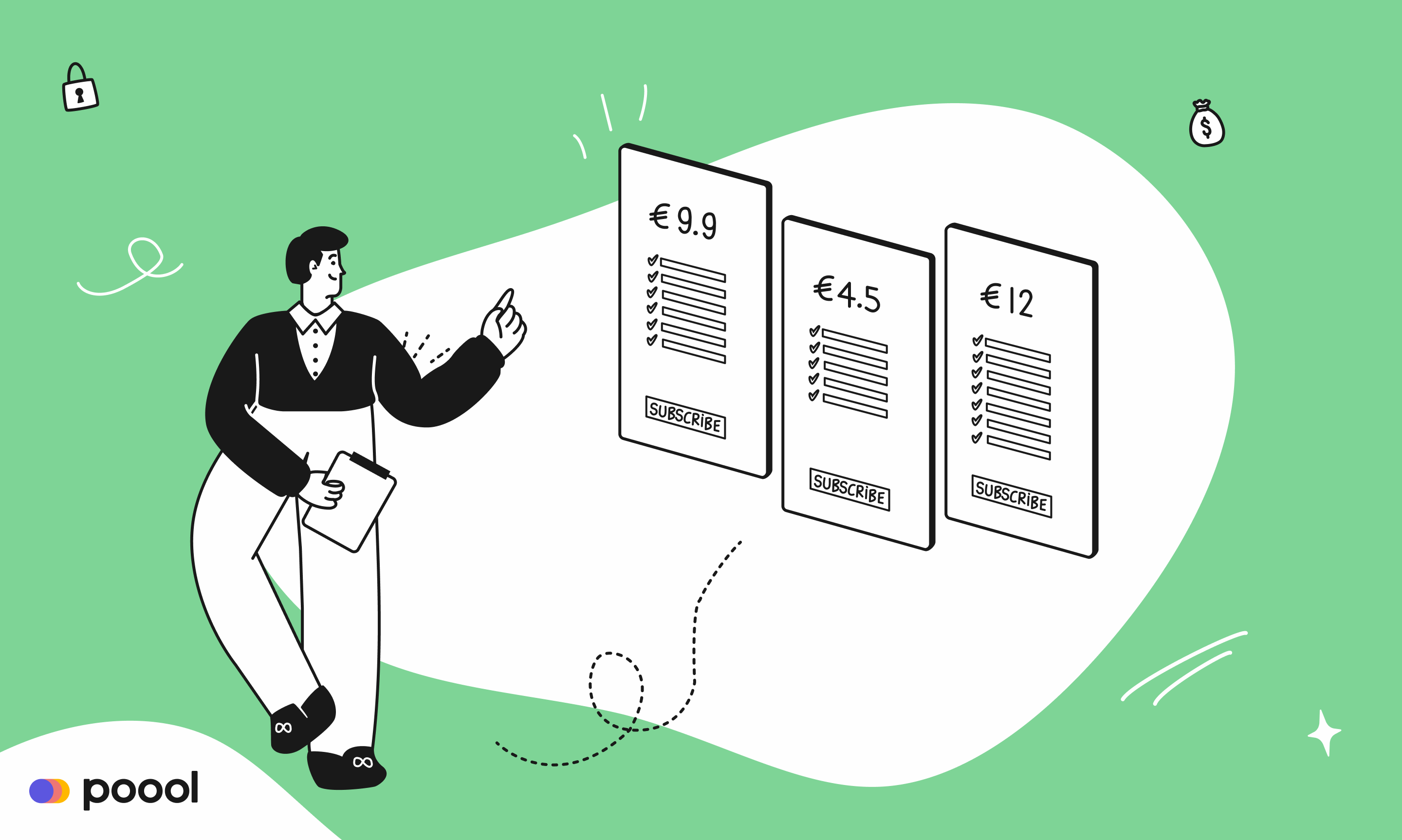This series looks at the paywalls employed by a variety of online content producers. The user journey, the amount of information required from the user, the payment methods offered and the ease of unsubscribing. These are all key to ensuring the success of a paywall, hence why we created this series and are analyzing the conversion funnels of these publishers.
Remember, however, that your most valuable tool to persuading a reader to take out their credit card and subscribe is your value proposition and content.
We'll cover:
- The Financial Times Paywall
- The Washington Post Paywall
- The New York Times Paywall
- Quartz Paywall
- Wired Paywall
- The Athletic Paywall
- Netflix Paywall (VOD)
- Canal+ Paywall (VOD)
- Audible Paywall (audio)
Interested in implementing a paywall and subscription strategy with the same success as these publishers? Poool have a simple, flexible platform to allow you to do exactly this, and without the need for tech support at every turn!
Book a demoToday: Quartz!
What's needed for a user wishing to read a premium article on Quartz (desktop):
- 5 clicks are needed to subscribe and return to content
- no scrolling is required
- 6 fields need to be filled out
- a single payment method is available (credit card)
So, step by step.
Step 1: The reader wishes to read an article but is stopped by a paywall
A visitor to Quartz wants to read a premium article but the paywall blocks them and requires that they subscribe in order to gain access. No scrolling is needed to see the paywall in its entirety. The beginning of the article is visible but the rest is blurred, hidden behind the wall.
A free trial is offered, and highlighted, on the paywall. It also provides a reader with all the benefits of their subscription offer. However, this is very lengthy for a paywall and may deter the reader from subscribing.
Step 2: Collection of email address
Before having access to offers, payment form and the account creation stage, the reader must provide their email address. This field appears directly on the paywall.
It's quite surprising that they ask for the users email address at this stage. However, it perhaps provides a 'fall back' point of contact for Quartz who can send an email to a user who stops before finishing the subscription process, for example reminding them of the benefits of subscription or offering a reduced rate.
Step 3: Choosing an offer and the payment form
Contrary to most of the subscription journeys that we’ve previously analyzed, a reader of Quartz has to complete the payment step before creating an account.
The reader chooses the offer and pays on the same page. As far as payment is concerned, only payment by credit card is available.
The two options are as follows (both cancellable anytime):
- A monthly subscription of 14,99 $
- A yearly subscription of 99,99 $
A special offer of -40% is granted on the yearly subscription. A reader opting for this subscription will pay in one go, meaning that if they want to unsubscribe, they will still have access for a year as payment has already been made.
No confirmation of subscription is sent to the reader at this point.
Step 4: Creation of an account
Once the reader has paid, they now have to create an account. They need to provide:
- A password
- First name
- Company
- Role
- Job level
- Industry
Asking users for information about their job/industry might be useful to adapt content to readers. Quartz has also developed a membership option entailing more than just written content, so this information might help Quartz to organise events that are relevant to readers and their industry.
The reader receives a welcome email about their subscription.
Step 5: Confirmation
The reader confirms their subscription and can then choose to:
- Return to the content that they started on
- “Explore unlimited quartz”
This is a very user-friendly added touch to the confirmation page.
That’s it, we’ve subscribed to Quartz and were able to read our article!
To sum it up, here are the steps leading to subscription:
- 5 clicks are needed to subscribe and return to content
- no scrolling is needed
- 6 fields need to be filled out
- 1 payment method is available (credit card)
What about mobile devices?
The same subscription journey, same number of clicks and same options.
The paywall entails the same amount of information which may be difficult to read on a small screen. One scroll is needed.
Interested in integrating Poool's Paywall into your site? Our Paywall platform allows you to segment audiences, block content differently depending on the user's context, A/B test journeys, analyze and optimize, all within our Dashboard!

